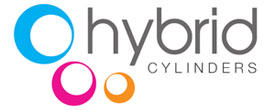Printers on the cutting edge of the business are always interested in finding ways to print faster at lower costs, but this is not so easy to achieve. Success doesn’t simply depend on deciding between flexo or gravure, it’s about finding the best printing method in an ever-evolving industry.
When we look at the marketplace in general, there are three significant trends which are shaping the way the printing business works.
Consumers Demand Shorter Print Runs
Consumers are demanding a faster turnaround time in the printing process and printers around the world are struggling to keep up, balancing the need for speed, productivity, and quality. Existing infrastructure, significant overhead costs, and few industry standards create barriers for printers to adapt to consumer needs. Printers will find success by looking at the direction of the industry and finding what fits their business direction, in addition to listening to their customers.
Evolving Global Marketplace and Economics
Regions around the globe have historically been set in their printing preferences. For example, Asia Pacific (excluding ANZ) for the last decade has mainly been focused on the gravure process (flexible packaging) mainly due to existing infrastructure and the strong incumbency of gravure in this region. It’s only recently that pockets of flexographic printing capabilities have cropped up in this region because of the limitations of gravure, such as printing on extensible films. As globalization weaves companies, supply chains, and regions together, printers must begin to look beyond traditional borders of geographies and capabilities to meet their customers’ needs.
Demand for Sustainable Workflows
Packaging graphics customers are experiencing a growing demand among their consumers for more sustainable practices and are examining all aspects of their supply chain, including the printing process, to reduce their environmental impact and increase their product stewardship profile. Printers must proactively meet their customers’ demands in this area as many large corporations have set “packaging neutral” goals, with smaller companies looking to follow suit. If you add the ever-increasing regulatory pressures by local governments, it is clear why sustainability is not just a passing fad.
How are these trends shaping Gravure and Flexographic printing?
Gravure and flexographic printing have been perceived as opposite sides of the spectrum: gravure is slow, but great quality and flexographic is fast, but average quality. However, these three trends are closing this gap at a quick pace, and it’s becoming difficult to tell the difference between a gravure and flexographic print.
Vijay Ramachandran is a Global Venture Leader with DuPont Packaging Graphics, with over 15 years of experience in the packaging printing industry, he has held various positions with DuPont packaging graphics, starting in India where he was responsible for the packaging graphics business until 2005, he then moved to China in 2006 where he worked extensively in the Asia Pacific markets as Manager – Marketing & Strategy, in 2011 he moved to the United States where is now based. Vijay holds a Masters Degree in Marketing Management from the University of Mumbai, and a Bachelors Degree in Economics. Before joining DuPont he also worked with Paper Products limited, one of India’s leading flexible packaging converters.
By Vijay Ramachandran / source: packageprinting.com
